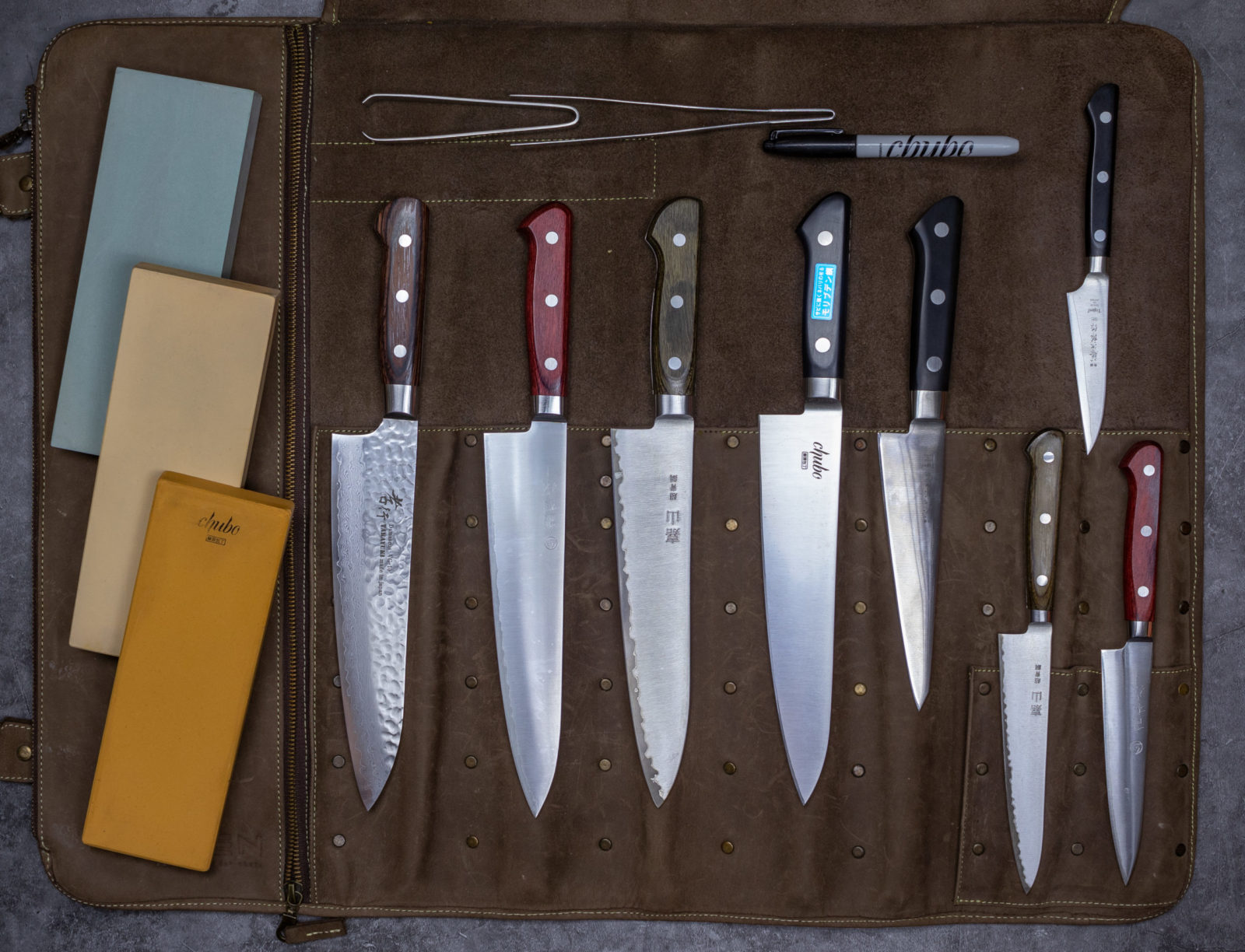
Japanese blades are typically thinner and made from harder carbon and stainless steel compared to most European-made knives. These characteristics of Japanese cutlery can give the impression that they are delicate and more susceptible to nicks and other types of damage, leading to a dull knife if not properly cared for. However, with proper care, Japanese knives can last a lifetime. Most major damage that we see comes from dropping the knife or inappropriate usage. To prevent a dull knife and keep it in excellent condition, here are the top things you should never do with a Japanese knife.
Using the Wrong Knife for the Job
Kitchen knives are designed for specific tasks, and using the right knife for the job is crucial. Here’s a quick guide to help you choose the correct knife:
- Gyutou Chef’s Knife: Ideal for cutting proteins and dicing vegetables with precision. Avoid using it to hack through bones.
- Deba Knife: Perfect for butchering fish due to its heft and blade geometry.
- Honesuki Knife: Best for butchering poultry.
- Hankotsu and Garasuki Knives: Suitable for boning tasks, thanks to their design to cut through joints.
- Petty Knife: Sometimes called a utility knife, this versatile and small paring knife is ideal for precision work and detailed cutting tasks.
Make sure you are using the correct kitchen knife for each task to maintain the integrity and sharpness of your knives.
Twisting the Knife
Twisting the knife while cutting can cause significant damage, especially with hard and dense ingredients like aged cheese or hard squash. This can cause a dull edge and compromise the sharp knife's performance.
- Use straight cutting motions without twisting to avoid damaging the blade.
- Choose a heftier blade like a Nakiri for cutting through tough ingredients, ensuring you maintain a sharp knife and a strong knife edge.
Cutting Frozen Food
Using a Japanese knife to cut frozen food is a definite no-go. The hard stainless or carbon steel of Japanese knives, while excellent for precision cutting, can be prone to chipping or cracking when subjected to the extreme hardness of frozen food. This can lead to a dull blade and permanent damage to the knife edge, rendering your sharp knife ineffective and unsafe to use. Always thaw your food thoroughly before attempting to cut it with a knife. By taking this extra step, you can ensure that your knife remains in pristine condition, preserving its sharpness and longevity.
Improper Use of Cleavers
Japanese cleavers are excellent for cutting vegetables and proteins, thanks to their weight and thin edges. However, they are not meant for butchery.
- Avoid cutting through bones to prevent damaging the steel blade and to keep your knives sharp.
- Utilize the cleaver's generous surface area for moving ingredients, not for heavy-duty chopping, to maintain a sharp edge.
By following these guidelines, you can ensure your Japanese cleavers remain effective and your knives sharp.
Not Hand Washing and Drying Immediately
Proper washing and drying techniques are essential for knife care.
- Always hand wash your knife and dry it immediately to prevent rust and maintain the knife’s sharpness and integrity.
- Avoid leaving the knife in the sink or putting it in the dishwasher. Exposure to moisture and harsh detergents can cause rust and other damage.
- Deal with any superficial rust immediately to maintain the knife's integrity and ensure it remains in top condition.
These washing and drying steps can extend the life of your Japanese knife and keep it performing at its best.
Not Regularly Sharpening
Keeping your knife sharp is crucial for both performance and safety. Here are some essential tools and tips to maintain a sharp edge:
- Knife Sharpener: Visit a professional knife sharpener regularly to maintain a sharp edge.
- Whetstone: Sharpen your knife with a whetstone for the best results. A sharpening stone provides precise control over the blade's edge.
- Honing Steel: Use of a honing steel to realign the knife edge between sharpening sessions can be helpful in fast paced professional kitchens, but remember that a honing steel is not a replacement for sharpening on a whetstone.
- Cutting Board: Use a soft cutting board to avoid dulling the knife blade. Hard surfaces can quickly wear down or damage the edge of your knife.
Ensuring Longevity and Sharpness
Proper care and maintenance of your Japanese knives will ensure they remain sharp and effective for years, easily becoming the best knife type in your arsenal. By using the right knife for each task, avoiding harmful practices and maintaining a regular sharpening routine, you can keep your knife in pristine condition. Professional chefs emphasize the importance of proper knife skills and taking care of the edge of the blade to maintain a sharp blade. If you have any questions about knife care, feel free to get in touch with us. Happy cooking!
